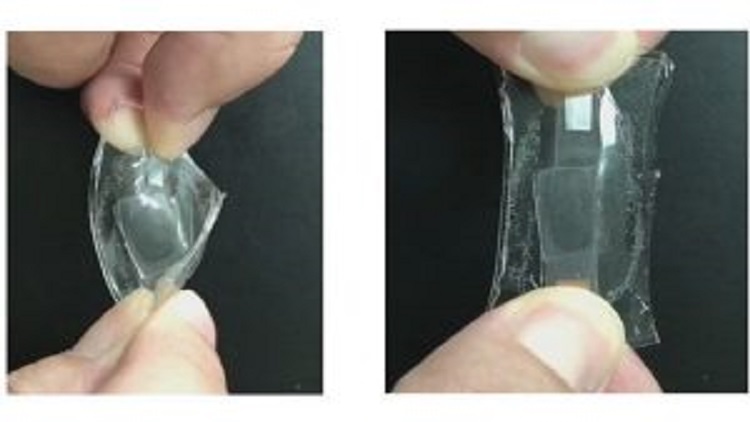S. Himmelstein | August 22, 2024
 The battery features stretchable components and stable charging and discharging capacity over time. Source: ACS Energy Letters 2024, DOI: 10.1021/acsenergylett.4c01254
The battery features stretchable components and stable charging and discharging capacity over time. Source: ACS Energy Letters 2024, DOI: 10.1021/acsenergylett.4c01254
The advent of flexible electronics for wearable health monitors and other applications requires the development of equally pliable power sources. Stretchy batteries formulated to date offer only moderate elasticity along with complex assembly processes or limited energy storage capacity. Researchers from Nanjing University of Posts & Telecommunications appear to have overcome these limitations by engineering a flexible lithium-ion battery with an electrolyte layer that can expand by 5,000%.
A thin film of conductive paste containing silver nanowires, carbon black and lithium-based cathode or anode materials is applied to a plate and then topped with a layer of polydimethylsiloxane, a flexible material commonly used in contact lenses. A poly(ethylene glycol methyl ether acrylate)-ionic liquid/lithium salt is added to ensure lithium-ion transport and mechanical flexibility, which is also imparted by the inclusion of silver nanowires.
Sealed in a protective coating, these components combine to form a solid, rubbery layer capable of stretching to 5,000% when activated by light. The devices also retain charge storage capacity after nearly 70 charge/discharge cycles and demonstrated an average charge capacity six times greater at a fast-charging rate than that of batteries equipped with a conventional liquid electrolyte.
The flexible solid batteries described in ACS Energy Letters offer scope for improving the performance of wearable or implantable electronics.
INDUSTRY RELATED
UNLIMITED FREE ACCESS TO THE WORLD’S BEST IDEAS
SIGN UP TO SEE MORE
This is embarrasing…
An error occurred while processing the form. Please try again in a few minutes.
Customize Your GlobalSpec Experience
This is embarrasing…
An error occurred while processing the form. Please try again in a few minutes.
